Budworms love to eat our petunias too!
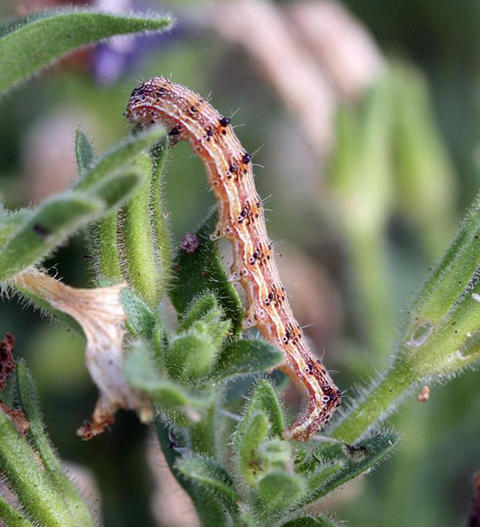
Usually around Independence Day gardeners notice that the flowers on their petunias and geraniums have just stopped blooming. Our hanging baskets are no exception, either! Not only do the flowers disappear, but there are little holes in the leaves and the developing buds as well, preventing new blossoms from even opening up at all. The culprit is a small, green and brown worm called the tobacco budworm and they love to eat petunias and geraniums. Their coloring helps camouflage them and they are quite adapt at hiding along the stems of the plants. It is the larvae of a moth that flys in the in evening and beats its wings very rapidly like a hummingbird. Small, round, black caterpillar droppings (poop) can even be found on the leaves and stems as well as the plants become sticky from sap dripping from the wounds.
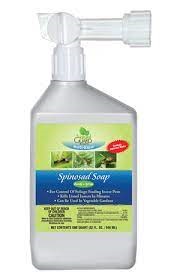
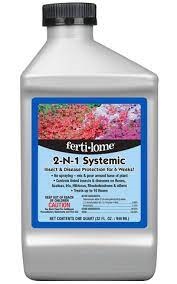
The most effective methods for controlling the budworms include many organic as well as synthetic insecticide options. On the organic side, we recommend Spinosad or Spinosad Soap as one of the very best options for controlling caterpillars in general, and it works on contact as well as by ingestion, stopping the caterpillars from eating within a few hours of exposure.
Permethrin, Sevin, and especially systemic insecticides like Imidicloprid (Ferti-lome 2 in 1 Systemic or Hi-Yield Systemic Insect Spray) work quickly on contact, but will provide a longer lasting control over multiple weeks. Fortunately, once the budworms are controlled, the flowers will begin to bloom again in just a week or two.
Iron Chlorosis strikes again!

Despite our drought conditions, Cache Valley experienced a wetter than normal spring, and all that extra water leached many of the available micronutrients from our soils – Iron especially. All it takes is a few weeks of hot, summer weather, and suddenly we see sample after sample of iron deficient raspberries, maples, spirea, oak, roses, and many other common plants. The telltale sign of Iron Chlorosis is a lighter green or even yellowing of the leaves with dark green veins running through the pale-colored tissue. Iron deficiency shows up in the newest growth or the most recently produced leaves first, then gradually will develop in the older leaves as well. The high pH of our soils (usually between 7 and 8 on the pH scale) compounds the problem, making many forms of iron and iron supplements unavailable to the plants as it binds up the iron and won’t allow the plants to absorb it. The most effective form of Iron you can use to supplement your plants is a pre digested form (or chelated) Iron that works in soil pH that is above 7 or higher.
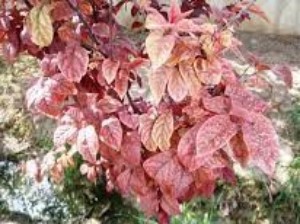
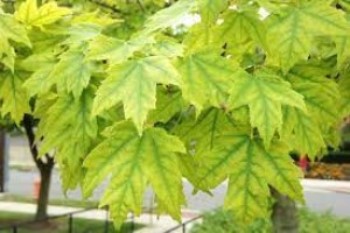

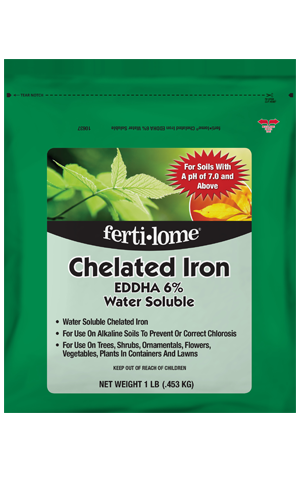
We recommend either the liquid Iron Combo Chelate from Baicor (made right here in Cache Valley) or a powdered version called EDDHA Iron Chelate. Both of these forms of iron will be instantly available to the plants and can correct a deficiency in just a few weeks depending on the size of the affected plant. Both can be mixed in water and applied as a foliar spray or applied to the soil as a drench. If you are experiencing this problem year after year, using soil sulfur to lower the pH of the soil helps considerably, as well as a preventative application of the chelated iron early in the year before the symptoms start to show.keep our hanging baskets looking amazing all summer long? Last year we had them blooming until after Halloween! We use the same formula to make the flower beds on Center Street go Berserk. Watch our newly updated video that walks you through our Secret Recipe to success with Hanging Baskets and Planters.


